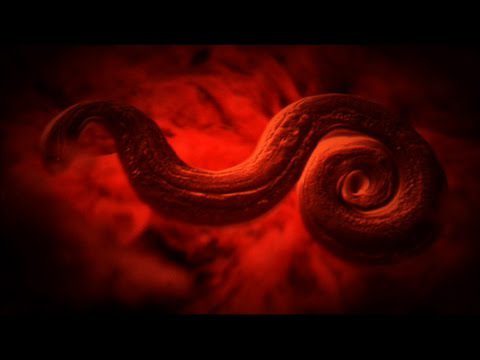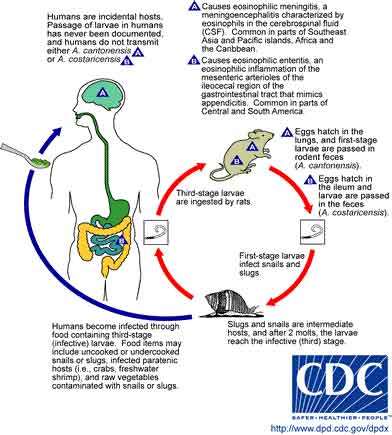Rat Lungworm Hawaii article from Malama O Puna
What you need to know.
Cases of eosinophilic meningitis caused by the rat lungworm parasite have risen sharply in Hawaii over the past 5 years. The parasite, a nematode (Angiostrongylus cantenosis), was carried from SE Asia to Hawaii by rats, which are the host. There is a possibility that there may be two species of the parasite in Hawaii. Angiostrongylus cantonensis has been identified in Hawaii, which causes human eosinophylic meningitis. Angiostongylus costaricensis has not yet been identified here but causes human abdominal angiostrongylisasis, affecting the digestive track and bowels. Many victims in Hawaii have had symptoms that suggest infection by Angiostongylus costaricensis.
The parasite can be transferred to slugs, and snails in the 3rd larval stage; it has also been found in flatworms. Humans pick up the parasite by ingesting slugs/slug slime contaminated fruits /vegetables/water or raw or undercooked slugs, snails, mollusks, prawns and monitor lizards. Humans are a dead end host, the parasite will not develop to sexual maturity and may live for up to a year in the human body but will eventually die. While the parasite has been in Hawaii a long time, cases of illness have risen with the introduction and increase in the population of an invasive semi-slug (Parmarion martensi), which is native to SE Asia.
Studies done in Hawaii in 2005 have shown 75.5% of semi-slugs collected on the Big Island to be infected with the parasite.
To best protect yourself from getting the parasite be informed & proactive.
There has been little research done in the U.S., most comes from South America and SE Asia.Extreme caution is your best protection.
Finish reading at the source: Rat Lungworm Hawai‘i – What You Need to Know


